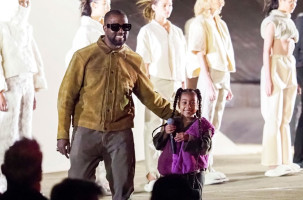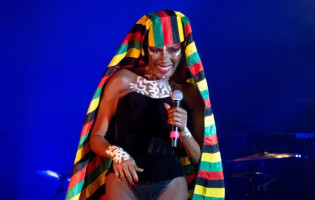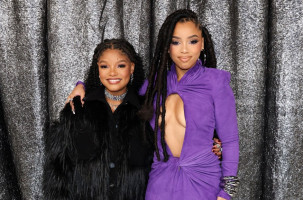In their 2008 hit, Brooks & Dunn advised us to “Put A Girl In It.” Now, some country radio programmers are wishing that Music Row hadn’t been quite so responsive.
Current songs on Billboard’s Country Airplay chart include Josh Turner’s “Hometown Girl,” Trent Harmon’s “There’s a Girl,” Dylan Scott’s “My Girl,” Easton Corbin’s “A Girl Like You” and Kip Moore’s “More Girls Like You,” plus Blake Shelton’s recent hit “A Guy With a Girl,” which moves to recurrent. Turner’s newly released Deep South album also includes the titles “Where the Girls Are” and “Hawaiian Girl.”
WGH-FM Virginia Beach, Va., PD Mark McKay says, “All the ‘girl’ songs have become a headache to schedule. I spend more time than I care to admit trying to separate them. Can someone please consult a thesaurus or something?”
But is all this sameness in titles indicative of a larger product problem? Some country programmers think so.
IHeartMedia director of Central Texas radio operations Travis Moon sparked an interesting debate on the topic in February when he posted a simple message on Facebook: “Anyone else done with warmed over, poor man’s top 40 music on country?,” then later added, “I think our format has been hacked.” While some took this to mean that Moon was endorsing a move to more traditional sounds in country music (a tired and long-since played out debate in the format), Moon explained that what he actually was advocating for was more of an “identity,” and noted that “our format has always worked best when embracing a variety of sounds, instrumentation and lyrical story lines.” While he’s a fan of the more genre-bending (and sometimes criticized) artists like Florida Georgia Line and Sam Hunt, Moon says the problem arises when labels service “poor man’s versions of these artists’ or CHR artists’ tunes,” which, he adds, “water down our formatic identity ... Our format deserves better ... We need to pare down on — or hold to a higher standard — the contrived, wannabe stuff.”
Starlight PR: 4 Weeks Premium Next Level Campaign.The Source Magazine, Hip Hop Weekly, Live radio interviews and more.
Among the PDs who agree with Moon is KIIM Tucson, Ariz., PD Buzz Jackson. “It’s true that we have lost a lot of our identity,” he tells Billboard. “I hear songs from time to time on my station and have to look at the radio to know for sure if I’m tuned to my station or the pop station in town ... Ultimately it’s about [balancing] the pop-sounding stuff with the other sounds in the library.”
KFKF Kansas City PD Dale Carter notes that the “true test” of “warmed over, poor man’s top 40” is when one of these songs “is driven to No. 1 and immediately falls by several thousand spins as the PDs who got it there drop it just as fast. The ultimate test is how much of this [music] will ever end up in a gold library. I suspect very little of it will.”
“We’ve had a product issue for over a year,” says Hall Communications vp programming Bob Walker. “After that huge up cycle, a lot of those new P1s who discovered country have found something else. Both current pop product and the explosion of ’80s classic CHR is siphoning them away. Those formats are upbeat, fun and familiar — the trifecta of a successful radio brand. People listen to improve their mood, not hear specific songs. Six of the top 10 songs on the Billboard Country Airplay chart for the week of March 6 are ones those people would call ‘snoozers’ — [an] actual, verbatim [listener] comment.
“It’s during the down cycles that using your own database for feedback is dangerous,” adds Walker. “If you only talk to your own fans while the ‘pie’ keeps shrinking, eventually the station will implode. If you do look outside, you’ll be surprised at how many big chart hits can’t score enough passion to even make the filler category, never mind power recurrent ... The constant barrage of disposable, midtempo songs from artists without ‘teeth’ makes it difficult to compete with the fun formats.”
Read more: "Starter Package" for up-an-coming artist. Everything you need to kickstart your career. Go from just making music to having a music career.
But not all country programmers think there’s a music problem, chief among them SiriusXM senior director of programming J.R. Schumann. “Country music is as strong now as it ever has been,” he says. “The only people I see really complaining about the format are the people in the format. I work in the same business that they’re in, and we have sales stories and success story after success story with these songs that are supposedly ruining our format. On my playlist right now there are eight records downloading more than 10,000 [units] a week.
“Country music is strong,” adds Schumann. “It’s one of the only formats where the audience still goes out and buys music, goes to concerts in huge numbers, is passionate about it, is passionate about radio and loves the connection with the artists. We work in the greatest format in this business, and the audience doesn’t seem to have a problem with [the music].”
McKay also is among those less concerned. “I’m not sure it’s a product problem, but maybe another evolution,” he says. “Seems like a lot of R&B/soul sound has made its way to country lately, and that’s not necessarily a bad thing, as long as you can find the ‘balance’ songs to keep from going too far left or right. More of an issue to me is the current ‘who is that?’ factor. [There are] so many new, unidentifiable artists that the audience can’t tell them apart.”
KRTY San Jose, Calif., GM Nate Deaton thinks it’s not so much the available product as it is the “safe” songs radio programmers are choosing that create the problem. “In a sense, yes, [country is] a watered down top 40 station, but that is because so few people want to play songs that aren’t safe,” he says. “The music is as good as it has ever been, but you have to explore the artists and not dismiss them because they are new. The audience is not, and they are moving farther and farther away from our product because they are finding the artists on their own ... The thirst for music discovery is massive. If we don’t satisfy it, we are going to lose.”
While Big Loud Records president (and former longtime radio programmer) Clay Hunnicutt concurs with Moon on the format’s identity problem, calling it a “legit argument,” he says radio plays — and labels service — what listeners have indicated they like. “Why do we hide our head in the sand from what the audience is telling us they want, buy and go to shows to see?” he asks. “Country is a blend of a lot of sounds. Embrace them.”








